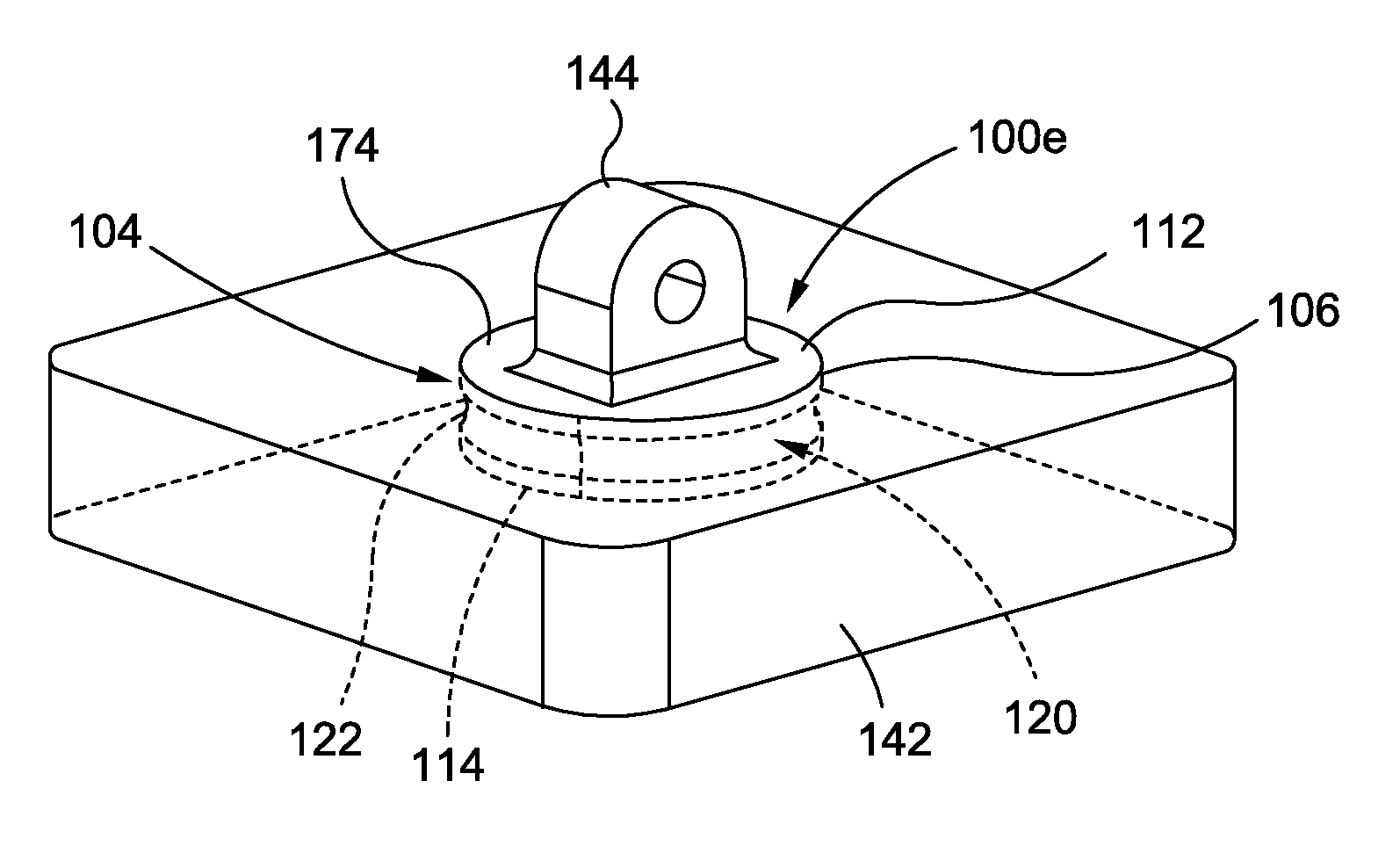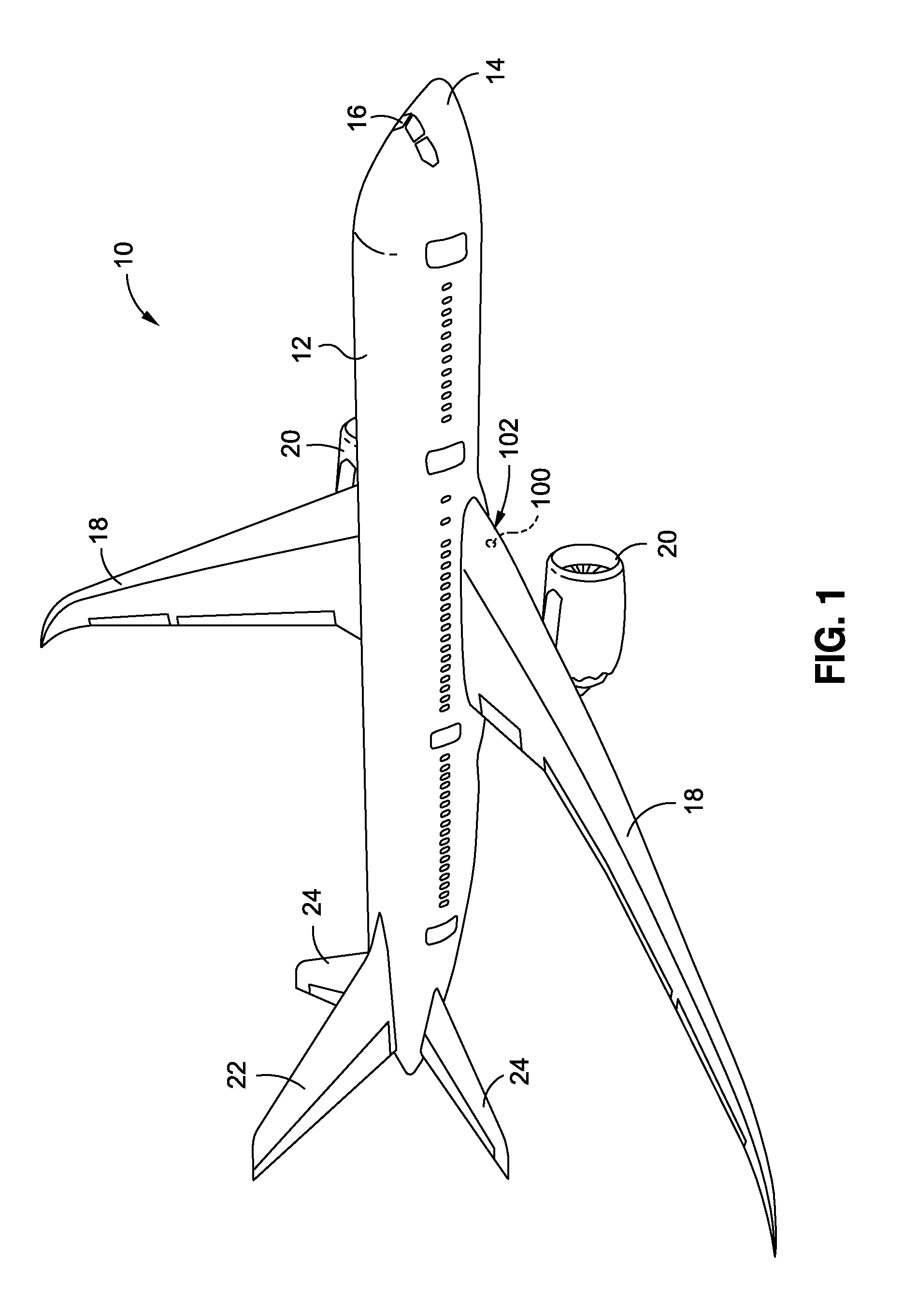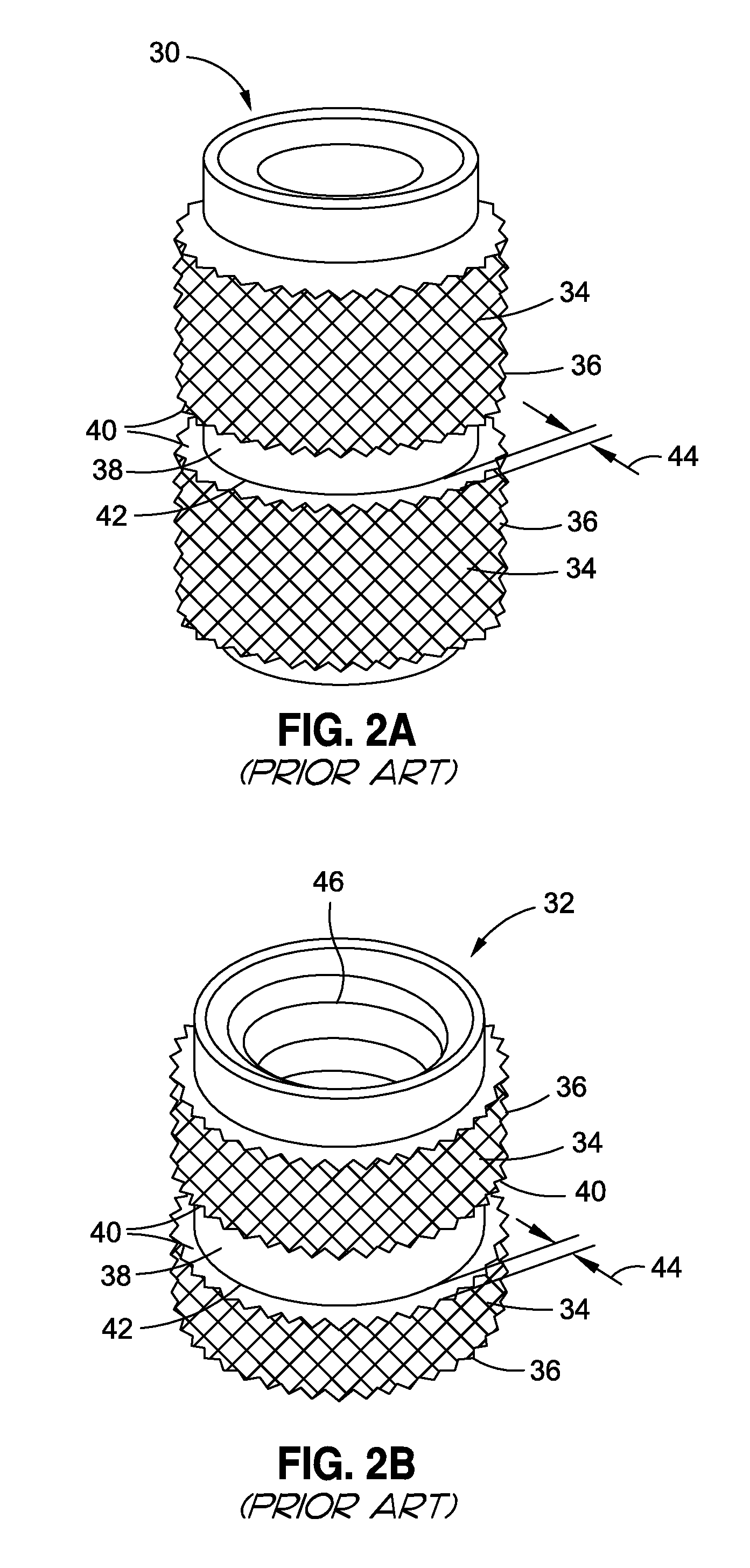Molded-In Insert and Method for Fiber Reinforced Thermoplastic Composite Structure
a fiber reinforced thermoplastic composite and insert technology, applied in the direction of threaded fasteners, manufacturing tools, mechanical equipment, etc., can solve the problems of poor retention of inserts, improper fit, and known press-fit inserts and swaged inserts designed for press-fit installation in metal structures or parts, and achieve high strength retention and high strength retention
- Summary
- Abstract
- Description
- Claims
- Application Information
AI Technical Summary
Benefits of technology
Problems solved by technology
Method used
Image
Examples
Embodiment Construction
[0048]Disclosed embodiments will now be described more fully hereinafter with reference to the accompanying drawings, in which some, but not all of the disclosed embodiments are shown. Indeed, several different embodiments may be provided and should not be construed as limited to the embodiments set forth herein. Rather, these embodiments are provided so that this disclosure will be thorough and complete and will fully convey the scope of the disclosure to those skilled in the art.
[0049]Now referring to the Figures, FIG. 1 is an illustration of a perspective view of an exemplary aircraft 10 that may be made from one or more composite parts 102 incorporating one or more advantageous embodiments of a molded-in insert 100 (or embodiments of molded-in inserts 100a-100h as shown in FIGS. 6-18B) of the disclosure. As shown in FIG. 1, the aircraft 10 comprises a fuselage 12, a nose 14, a cockpit 16, wings 18 operatively coupled to the fuselage 12, one or more propulsion units 20, a tail ve...
PUM
| Property | Measurement | Unit |
|---|---|---|
| groove radius | aaaaa | aaaaa |
| length | aaaaa | aaaaa |
| pressure | aaaaa | aaaaa |
Abstract
Description
Claims
Application Information
 Login to View More
Login to View More - R&D
- Intellectual Property
- Life Sciences
- Materials
- Tech Scout
- Unparalleled Data Quality
- Higher Quality Content
- 60% Fewer Hallucinations
Browse by: Latest US Patents, China's latest patents, Technical Efficacy Thesaurus, Application Domain, Technology Topic, Popular Technical Reports.
© 2025 PatSnap. All rights reserved.Legal|Privacy policy|Modern Slavery Act Transparency Statement|Sitemap|About US| Contact US: help@patsnap.com



